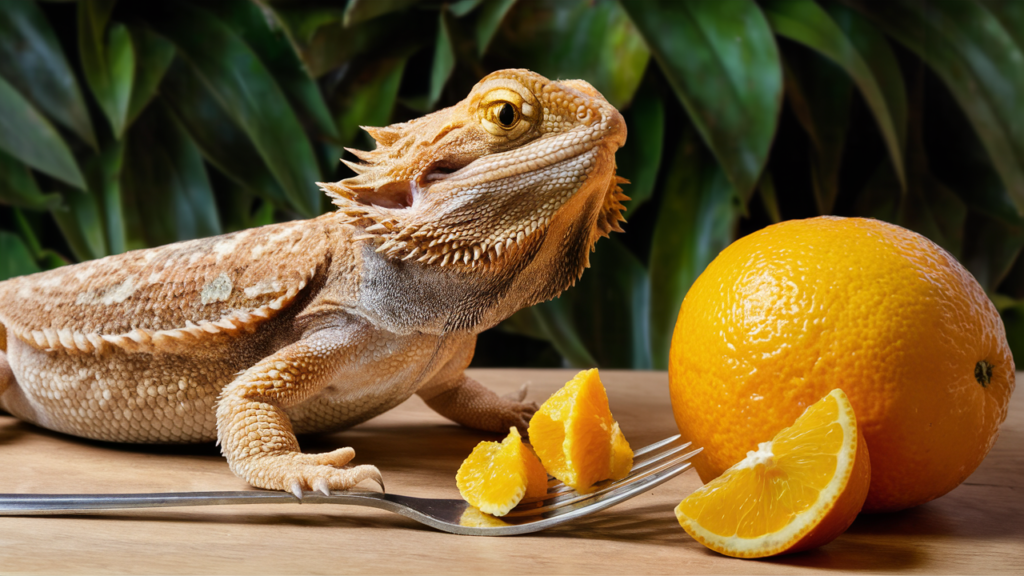Bearded dragon care
Getting an exotic pet such as a bearded dragon might seem like a great idea, but before buying a bearded dragon, ensure that you are prepared to commit your time, money, and effort into raising a healthy, happy bearded dragon.

Before buying a bearded dragon
Bearded dragons can well live up to 12 years — that is a huge commitment. Will you be off to university in a few years? Are you likely to move house? Will you want children in the future? Think about everything and then think if you’ll still be as committed to bearded dragon ownership as the initial enthusiasm you feel now.
Bearded dragons need plenty of space.
Can you provide enough space for a bearded dragon? They can grow quite big, sometimes reaching lengths of up to 60cm, and will need a large vivarium to live in when they are adults. Pam Mansfield, founder of the Exotic Pet Refuge in Market Deeping, Cambridgeshire, says: “Bearded dragons start tiny, but they do grow quite big and continue to grow for their entire life. You’ll need to be able to afford to upgrade the size of your vivarium as they grow. These are expensive and will take up a lot of space.”
The RSPCA recommends that the vivarium for two adult bearded dragons be at least 150cm long, 50cm is wide, and 50cm high. Will you have enough space to accommodate this size of vivarium?
Not all bearded dragons will enjoy being handled.
Not all bearded dragons enjoy being handled — some will tolerate it and sometimes grow to enjoy it, but others just won’t. If you are in search of a cute, little reptile pet that will enjoy handling, a bearded dragon may probably not be the best choice for you.
Bearded dragons live for a long time.
Can you provide a lifetime of care to a bearded dragon? They live on average for 8 to 10 years but can live for up to 12 years. As an owner, you will have to be willing to commit to this amount of care.
Can you afford a bearded dragon?
Have you considered the costs involved in owning a bearded dragon? There is the expense of heating and lighting the vivarium, feeding, and pet insurance premiums, plus veterinary fees in case of emergency. These will all need to budgeting for in advance.
Who will care for your bearded dragon while you are on holiday?
What about holidays? Do you have a knowledgeable friend or local specialist who will be able to care for your bearded dragon while you are on holiday? You will also need to consider the potential costs associated with this.
Bearded dragons are not ideal pets for young children.
Who are you buying the bearded dragon for? For yourself or your children? Bearded dragons do not make good beginner pets for younger children as they will require careful handling in order to avoid injury.
An initially keen child may become bored quickly and pass on the responsibility for the animal’s care to the parent. Remember that even the keenest child will need constant supervision to ensure that their pet is properly cared for.
Remember too that children may move away to university within a bearded dragon’s lifetime, leaving parents responsible for the bearded dragon’s care.
related: Can bearded dragons eat maggots and Black soldier fly larvae?
Can bearded dragons eat Thyme and Basil? Find out now
Feeding your bearded dragon
Bearded dragons are omnivorous — in the wild, they would eat small spiders, locusts, mealworms, earthworms, snails, and crickets. They would also graze on plant materials.
In captivity, we should feed bearded dragons a diet of insects and fresh leafy vegetation every four to five days. Pam Mansfield, founder of the Exotic Pet Refuge in Market Deeping, Cambridgeshire, recommends a diet of live insects, mainly crickets, with the occasional mealworms and locusts added for variety.
These should constantly be fed live — a bearded dragon will not eat dead insects. Larger bearded dragons can feed on dead pinkie (baby) mice, but these are not always taken.
It’s essential to remove any uneaten insects at the end of the day as they might bite your bearded dragon during the night when he is less active. Monitor how many you put in each time you feed him and how many are left, so you know roughly how many per day he needs to fulfill his appetite. Like many pets, bearded dragons can become obese, so monitor their condition carefully.
Feeding insects will need to be treated with vitamins, particularly calcium, to keep your bearded dragon healthy. “We use a product called Cricket Plus,” says Pam. “Twice a week, the crickets are dipped in this before feeding, so the vitamins and calcium are ingested along with the cricket.”
Grated cuttlefish added twice a week to the vegetation is another good source of vitamin C.
Bearded dragons also need fresh, washed green and vegetables, including dandelions, spring greens, and flowers. These should be provided daily and removed if not eaten by the end of the day.
Clean, fresh water in a heavy-bottomed dish should always be available.
If you have more than one bearded dragon living together, remember to provide separate water and food stations to avoid resource guarding.
Feeding juveniles
Juvenile bearded dragons will require a higher percentage of insects in their diet; these should be smaller to allow for your dragon’s size and should be offered daily, along with plenty of fresh plants. Ensure that the diet contains the correct amount of vitamins and minerals, particularly vitamin C, to ensure your bearded dragon grows into a healthy adult. The RSPCA recommends that grated cuttlefish be added to a juvenile bearded dragon’s diet every day.
About the bearded dragon
Bearded dragons originate from Australia, where they naturally would be found living in semi-desert areas. They are mostly up and about during the day. They spend most of their time on the ground but do enjoy some climbing too.
Bearded dragons are no longer allowed for exporting from Australia for the pet trade, so any reptile purchased as a pet in the UK should be captive-bred. It is vital that you buy your bearded dragon from a responsible breeder or reputable outlet to produce and supply healthy reptiles.
Whether big or small, any animal that is kept as a pet relies on you, the owner, to provide for them. Pets are at the mercy of their owners to provide everything they need to remain healthy. Remember also that you have a duty of care to an animal for its entire life. In the case of a bearded dragon, this can be up to 12 years, and during this time, your pets’ needs are likely to change.
Housing your bearded dragon
Where should you keep a bearded dragon?
The ideal living area for a bearded dragon is a glass-fronted vivarium with a secure sliding door. Ventilation is essential, and a mesh-covered window in the roof is perfect.
The bigger vivarium for any adult bearded dragon, the better, but it should be at least 6ft long and 50cm wide and deep. Pam Mansfield, founder of the Exotic Pet Refuge in Market Deeping, Cambridgeshire, says: “Buy a large vivarium while your bearded dragon is small and use a smaller container, like a fish tank, within the vivarium until they are ready to use the bigger space.”
Do bearded dragons need heating?
In the wild, dragons live in desert areas, warming up under the morning sun until they have enough energy to eat and move around.
The temperature in your bearded dragon’s vivarium should range from 28°C in the coolest areas, with areas up to 40°C in places during daylight hours. Nighttime temperatures in the vivarium should be around 20°C.
An underfloor heat mat will help maintain the ideal environment temperature, while a suspended spot lamp, on for 8-12 hours per day depending on the time of year, will also be needed for basking. Place thermometers at either end of the vivarium to ensure that you are able to maintain the correct temperature.
Do bearded dragons need UV lighting?
Bearded dragons need access to full-spectrum UVB lighting for around 8-12 hours a day to mimic natural daylight. UVB is necessary in order to help the bearded dragons break down calcium. Remember to change the bulb at intervals recommended by the manufacturer to ensure that the correct UVB levels are maintained.
The best bedding for a bearded dragon?
For bedding, use reptile-safe sand, carpet, newspaper, or paper towels. If using sand, allow a good depth so that your bearded dragon will be able to dig down into it.
Do bearded dragons need water?
You should provide a heavy-bottomed shallow dish filled with water in the cooler area of the vivarium at all times for both drinking and bathing. It’s important to note that you should change the water every day.
What else should you put in a bearded dragon’s vivarium?
Bearded dragons like to have a hiding spot, something to hide underneath, and will also enjoy securely-fixed rocks and branches to climb onto and use for basking. Ensure that you provide these items at both the warmer and cooler areas of the vivarium.
Do bearded dragons need a companion?
In the wild, bearded dragons generally live solitary lives and will happily live alone in captivity, too, although specific pairings can live together. Pam suggests: “You can’t keep two males together; they will fight like mad. Even males caged next to one another will attempt to get to each other through the glass. Two females may be able to live together, but they may still fight. Bearded dragons will be the happiest living alone.”
Caring for your bearded dragon
Cleaning out a bearded dragon’s vivarium
The vivarium will need to be spot-cleaned every day, and any uneaten live food and vegetables should also be removed at the end of the day.
Every week, the entire vivarium should be emptied and cleaned with a reptile-friendly disinfectant. All the cage furniture and bowls should also be cleaned thoroughly. The substrate should be replaced entirely. “We rotate the type of substrate we use in our vivariums to keep the bearded dragon’s environment enriched,” says Pam Mansfield, founder of the Exotic Pet Refuge in Market Deeping, Cambridgeshire.
Bearded dragons have susceptible digestive systems, so avoid any substrate that your dragon may easily swallow. Textured slate, porcelain tiles, or newspaper make ideal substrates, plus they are easy to clean and replace.
Remember, it’s important to always wash your hands after handling your bearded dragon, any of its food, or any objects from the vivarium in order to maintain good hygiene.
Do bearded dragons shed their skin?
Yes. A bearded dragon continually sheds its skin as it grows. Juveniles may do this as regularly as once a month when they are growing rapidly.
Unlike snakes, the skin of bearded dragons sheds in small pieces.
Having rocks that your bearded dragon can rub against and ensuring that there is always fresh water available will help shedding.
Any pieces of dead skin that remain on your bearded dragon for several days may need to be removed by you; in addition, this could be a sign that the vivarium’s humidity is not correct.
Do bearded dragons enjoy being handled?
How much your bearded dragon will enjoy handling depends on the individual dragon; some will enjoy it while others will not. Due to their size and strength, older children should only be handled under close supervision to avoid them being dropped or injured.
Is your bearded dragon healthy?
Bearded dragons should not suffer from many illnesses and ailments when adequately cared for and provided with the proper living environment.
A healthy bearded dragon should be:
- Active
- Bright-eyed
- Alert
- Should be moving freely
- Show no signs of parasites on the skin
- Eating a normal amount
- Toileting regularly
- Have no deformities or thinning at the base of the tail
- You should not be able to see the ribcage or the pelvis bone. These indicate that your bearded dragon is underweight
- Your bearded dragon should be shedding their skin correctly.
Before your bearded dragon arrives home, ensure that you have located and registered with your local reptile-friendly veterinary clinic. It is crucial that you find somewhere with the experience of treating reptiles, as not all vets do. Recommendations from other reptile owners is often the best way to find a good vet.






